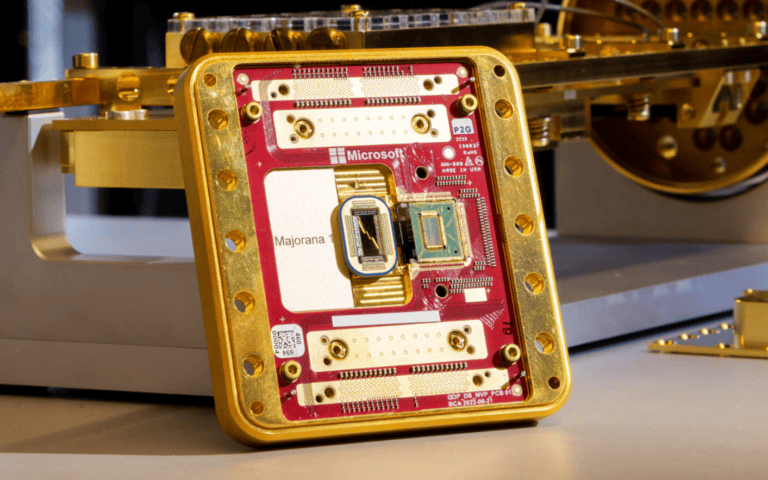Thanks to an entirely new “transistor for the quantum age,” Microsoft believes quantum computing is not decades out, but mere years away. Majorana 1 is the name of its most promising chip yet, based on a brand-new “Topological Core” architecture. What does it entail and why is Microsoft so excited?
Microsoft is actually presenting two things at once with the Majorana 1 announcement. First, the topoconductor, a new kind of artificial material to control qubits optimally. In addition, Microsoft’s latest chip is evidence that this topoconductor can actually be practical, a major step towards an eventual breakthrough in making quantum computing a reality. Put more succinctly, Majorana 1 marks a promise that the Redmond tech giant has found a path to one million reliable qubits, and soon.
Reliable qubits
Multiple tech companies have reported being able to cram high numbers of qubits together on a single processor. That’s already an impressive feat at first glance, since these are the building blocks for an eventual quantum computer. The generally accepted notion is that one million of these qubits put together would be the major inflection point. A one million qubit system would perform calculations that all the current compute in the world could never accomplish – in no time at all, as well. Examples of this initial approach towards ever greater numbers of qubits abound: take Google’s Willow, the fastest quantum chip ever. IBM, too, has been working for years on ever-larger qubit numbers on a single processor.
However, they run into a problem: the qubit, the very building block of quantum, is extremely unreliable. All kinds of external factors can ruin its effectiveness. Therefore, stacking qubits is not enough; that’s only part of the overall breakthrough we will see accomplished one day. The other revolves around stable and measurable qubits, and that is what Microsoft thinks it has achieved with Majorana 1.
From eight to a million
The Majorana 1 chip contains eight qubits, each made of four Majoranas, the new exotic particles that Microsoft has been in pursuit of making for nearly 20 years. They are created only by a perfect mixture of magnetic fields and superconductors, made possible in Majorana 1 by indium arsenide and aluminum. Majoranas, however, hide their quantum information, creating measurable results only through special microwaves. In addition, they are in a so-called topological state, possible only in the quantum world and thus radically different from gas, liquid or solid matter.
Where things get a little more conventional is in the control of the qubits themselves. They can be turned on and off in the Majorana 1 with voltage regulation to the qubit in question, no different to what happens with a normal transistor. This is why Microsoft suggests it has found a path to a million qubits with this Topological Core architecture: you just need to scale them, just like the number of cores on a normal chip.
Majorana 1: familiar and exotic
Microsoft goes on to explain Majorana 1’s exotic nature, yet sometimes it comes across as quite a recognizable, conventional processor in ways. We already mentioned the voltage pulses that regulate the chip. In addition, through software it is possible to build hybrid applications, in which quantum takes care of only a piece of the entire computation on its own. In effect, it is set to become a coprocessor on steroids for the hardest tasks of all.
Where things get exotic again, on the other hand, is when looking at the components required. For example, the Majorana 1 includes a “dilution refrigerator” to keep the qubits at the desired, very low temperature. Presumably we are going to hear more about this refrigerator when the quantum future really becomes the quantum here and now.
Twenty years of waiting, and now a few more years to come
Microsoft set out almost twenty years ago to develop the topoconductor. Now that it has accomplished this in a functional processor (and provided it with peer-reviewed science), it is not done yet. Together with PsiQuantum, which also aims to build the “world’s first useful quantum computer,” it has joined a DARPA program to test how close quantum computing really is.
The Majorana 1 is undoubtedly an impressive achievement. In fact, it already has practical viability, as developers can test with it through Azure Quantum. Still, Microsoft admits there is still work to be done. For example, it does not know if the optimal choices have already been made in terms of materials. How will Microsoft find out what the best improvements are? By using a quantum computer of course. Right, so we end up with a chicken-and-egg problem. Many of the breakthroughs it still wants to make can only be achieved with a successor to Majorana 1.
